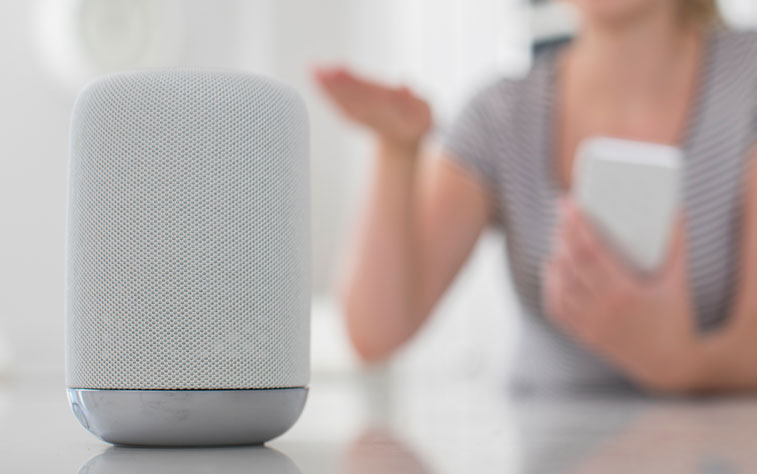Voice technology may just be the next UX revolution, and brands are making it more than a novelty. Those that succeed in voice won’t just hone the cutting edge – they’ll gain the advantage.
Brand conversation has always been at the core of effective marketing, but now, with the rise of the AI assistant, we can actually talk to brands. For the first time ever, the brand-customer dialogue doesn’t start with an advertisement or even a comment or a share – it starts with “Ok, Google” or “Hi, Alexa” or “Hey Siri”.
This development isn’t just cool, it’s also a paradigm shift in how consumers interact with computers, as digital grows more deeply intertwined with day-to-day life. What we’re seeing is a transformation, as tech becomes more advanced and intelligent, but also much more human.
Right now, voice technology is still new, and how we interact with it is still pretty simple. But the upside is massive as voice and artificial intelligence emerge together. If brands aren’t excited about that, we don’t know what they’re excited for.
Brands that leverage this technology don’t just have the potential to surprise and delight – they have the chance to change how we see brands entirely. But achieving that goal will take a team that knows the tech, understands customers, and knows just what to say (and when to say it).
Conversation Starters
Brands strive constantly to find more intuitive ways to start a conversation with consumers, be it emails, social posts, or targeted ads. We think all of these are great, but what if you could just say, “Hello”?
A few decades ago, this notion wouldn’t be brand strategy – it’d be science fiction. But today, voice technology is everywhere, perhaps the biggest of this decade’s “next big things,” and it presents a huge opportunity for brands. Quite suddenly, we have a venue for digital conversation that is as natural, fun and almost as intuitive as talking to a person.
Let’s not get ahead of ourselves: How we use voice today is, often, just a few steps from tech novelty. Brands that want to use voice as a marketing tool will need a clear strategy and an understanding of voice’s present capabilities. That will take a team that understands voice skills, knows their capabilities, and has the expertise to turn “hello” into something bigger and better.
Let’s Talk Process
Though the technology may be cutting-edge, we approach voice development with the same core questions we do any other digital experience, notably:
- Who is our audience?
- Where is our audience?
- What do they care about?
Not everything is business as usual, of course. ‘Zero UI’ devices like voice assistants raise design and user experience challenges that are a far cry from traditional problems in visual design. Our brilliant UX team works hard to create and build out workflows so that our copywriters can get to work, crafting an engaging, voice-driven experience that speaks to your brand’s identity and has a clear conversion path. This process is close and collaborative – we think the best ideas happen when we’re rubbing shoulders.
Once your skills enter the wild, we take a decidedly analytical approach, gauging their performance and turning that information into real, useable insights. We feed all this back into future efforts and use it to refine our approach down the line.

The Lovable Future
The adoption of voice assistants and other voice-enabled devices tells us one thing: Customers are interested in voice technology, enjoy using it, and will go out of their way to do so. They’re curious about the future, and they want to see how brands plan on using new technology. They will happily be marketed to — if you give them something they’ve never seen before, that is.
Majorsystems sees the future of technology as the future of marketing, as well, and voice is no exception. For the brands that partner with us, we don’t just move them towards the cutting edge – we help create it with them.

